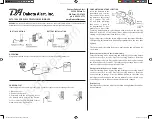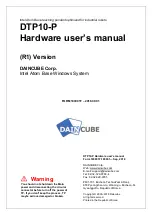
Step 1.
Insert the heel portion of your blade into the manual slot marked
CARBIDE
and pull through from heel to tip (never back and forth). Moderate
downward pressure is all that is required when pulling the knife through the
slot and lift the knife handle in the curve portion of the blade to sharpen all
the way out to the tip. Use a smooth, consistent stroke when pulling the knife
through the slot at a speed of 1 second per 2 inches. Repeat a minimum of
10 times. After 10 pulls, the knife should begin to pull thru the slot smoothly.
If not, additional pulls are required.
NOTE: Knives made of extremely hard
steel may require additional pulls through the slot when setting the initial edge.
Step 2.
Once the initial edge is set using the
CARBIDE
slot, turn on the power
to the interlocking ceramic wheels. Insert the heel portion of the knife blade
into the slot and lower the blade to make contact with the interlocking wheels.
When your blade contacts the wheels and self-aligns itself between the two
wheels, pull through slot from heel to tip (never back and forth) at a speed of
1 second for every 2 inches of the blade. Moderate downward pressure is
all that is required and lift the handle at the end to sharpen all the way out
to the tip of the blade. Use a smooth, consistent stroke when pulling the blade through the slot.
Step 3.
Repeat a minimum of 10 times.
NOTE:
Knives made of extremely hard steel may
require additional pulls through the slot when sharpening the edge.
Step 4.
Check the sharpness of your blade by cutting a piece of paper or a fruit or vegetable. If
additional sharpening is needed, repeat process until sharp but make sure to clean your knife
before continuing. In most instances, you will only need to repeat Steps 2-4. In rare cases though,
if your knife is severely damaged and extremely dull, you may need to repeat Steps 1-4 again. If
knife is sharp, be sure to turn off power to the machine.
Re-sharpening or light honing of a European/American Style Kitchen Knife with
a straight edge and ground on both sides
NOTE: This process requires use of the electric sharpening slot ONLY and should be
applied to moderately dull blades or if you are just maintaining an already sharp blade.
Smith’s recommends always performing a light touch up of your knife before each use.
Step 1.
Turn on power to the interlocking wheels. Insert the heel portion of your blade into theslot
and lower blade to make contact with the interlocking ceramic wheels. When your blade contacts
the wheels and self-aligns itself between the two wheels, pull through slot
from heel to tip (never back and forth) at a speed of 1 second for every 2
inches of the blade. Moderate downward pressure is all that is required and
lift the handle at the end to sharpen all the way out to the tip of the blade. Use
a smooth, consistent stroke when pulling the blade through the slot.
Step 2.
Repeat a minimum of 10 times.
NOTE: Knives made of extremely hard
steel may require additional pulls through the slot when sharpening the edge.
OPERATING INSTRUCTIONS
Read all IMPORTANT SAFEGUARDS and OPERATING INSTRUCTIONS thoroughly
before using this product.
CAUTION:
• Always sharpen your knife blade from the heel to the tip of the blade,
never back and forth.
• Never insert the tip of the knife blade into the sharpening slot first, or
push your knife blade through the sharpening slot. This could damage the
knife sharpener and/or your knife.
• In order to get the best results and to reduce excessive wheel wear, it is important that
you keep the proper orientation of the knife blade to the wheels. Always keep the knife blade
perpendicular to the counter top, so that the blade contacts both ceramic wheels equally. It
should be straight up and down in the center of the sharpening slot at all times. Hold your knife
securely but comfortably in your hand and use light downward pressure to contact the wheels.
• Due to some handle designs, you may not be able to sharpen the entire length of the blade
using the ceramic sharpening wheels. In these limited cases, Smith’s
®
recommends using
the manual sharpening slots to sharpen these small areas of your blade. Use the slot marked
“Carbide” if this portion of your blade is extremely dull or damaged and in need of re-setting
the edge, then move to the finishing/honing stage in the slot marked “Serrated.” If this portion
of your knife is somewhat sharp but in need of light honing, just use the slot marked “Serrated”
to sharpen this portion of your blade.
• Do not use excessive force when sharpening with the interlocking wheels or the wheels will
stall during use.
Clean Out
A magnetic collection strip located in the bottom of the sharpener
collects the metal filings generated during the sharpening process
for safe and easy disposal.
Step 1
Step 2
Initial edge setting and/or sharpening extremely dull or damaged European/
American Style Kitchen knives with a grind on both sides.
”European/American Style Kitchen Knives” is defined as kitchen knives with an angle of 14 – 20
degrees on each side (28 – 40 degrees combined).
NOTE: You must first set the initial cutting edge of your knife to the appropriate angle of
the interlocking ceramic wheels before sharpening your blade in the electric sharpening
slot. This is a one-time process that will not be required for re-sharpening or light honing.
You will also have to use this process if your blade ever gets damaged or extremely dull.
Step 1





































